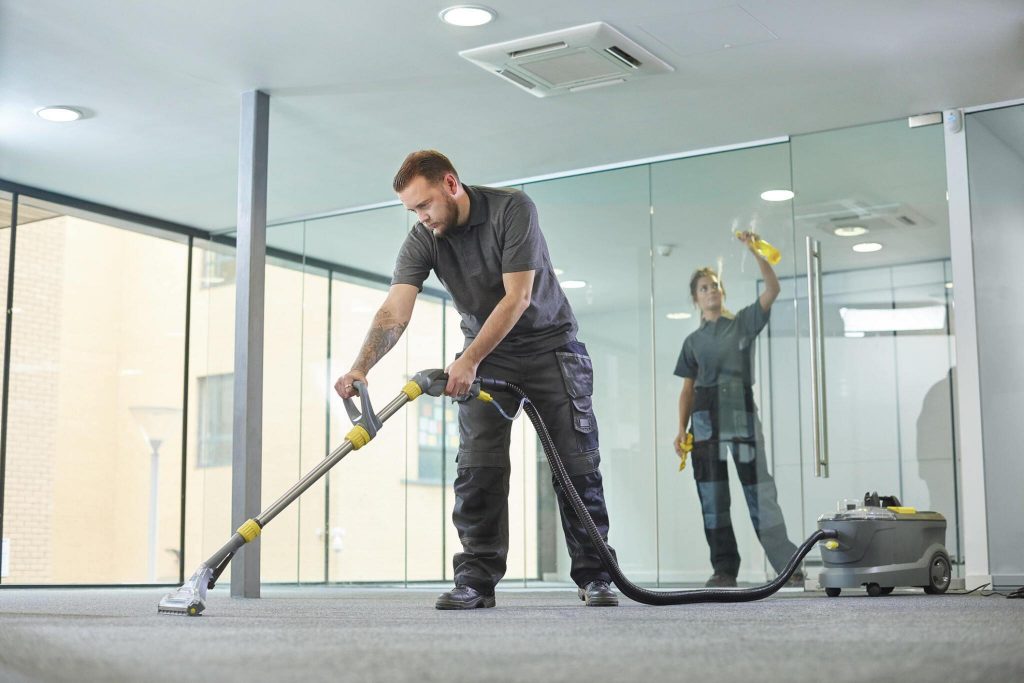What does sanitizing do? Learn how sanitizing effectively eliminates harmful germs and bacteria, creating safer environments for daily activities.
Sanitizing refers to the process of reducing or eliminating harmful microorganisms, such as bacteria and viruses, from surfaces, objects, or environments. This practice is essential for maintaining hygiene and preventing the spread of diseases. By sanitizing commonly touched surfaces like doorknobs, countertops, and electronic devices, we minimize the risk of transmitting pathogens from one person to another.
Regular sanitizing routines are particularly crucial during outbreaks of contagious diseases or in areas with high population density, as they play a vital role in breaking the chain of transmission and promoting overall well-being.
What Is Sanitizing?
Sanitizing is an essential aspect of cleaning and hygiene practices that involves reducing the number of harmful microorganisms on surfaces to a safe level. Sanitizing not only helps to eliminate germs but also reduces the risk of illness spreading among individuals. Effective sanitizing methods utilize various techniques and products to target and destroy a wide range of harmful microorganisms, including bacteria, viruses, and fungi. By incorporating these methods into our cleaning routines, we can create safer environments for everyone.
Types Of Sanitizers
There are several types of sanitizers available, each with its own specific purpose and benefits.
Chemical Sanitizers
Chemical sanitizers like chlorine, iodine, and quaternary ammonium compounds are potent agents that combat microorganisms by disrupting essential cellular functions. Chlorine oxidizes enzymes and proteins, iodine penetrates cell walls, and quaternary ammonium compounds disrupt cell membranes, leading to microbial death. Widely used in hospital sanitizing settings, these chemicals effectively eliminate pathogens on surfaces, medical equipment, and water sources, ensuring a hygienic environment for patient well-being.
Heat-Based Sanitizers
Heat-based sanitizers employ various techniques to eliminate or deactivate microorganisms through the application of heat. Common methods include boiling, steam sterilization, and hot water immersion. Boiling water, for instance, effectively kills most microorganisms at temperatures above 212°F (100°C). Steam sterilization, a widely used method in medical and laboratory settings, utilizes pressurized steam at temperatures typically ranging from 250°F to 270°F (121°C to 132°C) to achieve sanitization. Hot water immersion, often employed in food industry practices, relies on temperatures above 160°F (71°C) to eliminate harmful pathogens.
Ultraviolet (UV) Sanitizers
Ultraviolet (UV) sanitizers harness the power of ultraviolet radiation to effectively eradicate harmful microorganisms. By emitting UV light, these sanitizers target the DNA or RNA of bacteria, viruses, and other pathogens, disrupting their ability to reproduce and ultimately neutralizing their threat. This technology acts as a formidable defense against infections, offering a chemical-free and efficient sanitization solution. With their ability to penetrate surfaces and eliminate germs in mere minutes, UV sanitizers have become indispensable tools in various settings, from healthcare facilities to homes and beyond, providing a reliable means of ensuring cleanliness and safety.
Electronic Sanitizing Devices
Electronic sanitizing devices utilize electricity to produce potent sanitizing agents or processes, such as ozone gas or plasma fields, to eliminate microorganisms effectively. Ozone generators oxidize bacteria, viruses, and pathogens, while plasma sanitizers disrupt cellular structures, rendering them inactive. These methods provide thorough sanitization, even in hard-to-reach areas, but require careful handling and adherence to safety guidelines.
Natural Sanitizing Agents
Natural sanitizing agents, such as vinegar, hydrogen peroxide, and essential oils like tea tree and lavender oil, harness the antimicrobial properties found in natural substances. Techniques like steam cleaning also contribute to this category by utilizing high temperatures to eliminate microorganisms. Compared to traditional chemical sanitizers, these natural agents offer a safer and more environmentally friendly alternative, making them suitable for various applications in cleaning and disinfection.
What Does Sanitizing Kill?
Sanitizing kills harmful microorganisms, such as bacteria and viruses, to reduce the risk of infections and illnesses. Some of the specific types of microorganisms targeted by sanitization methods are:
Bacteria
Sanitization procedures are essential for eliminating bacteria by disrupting their life cycle through physical cleaning and chemical agents. Thorough cleansing reduces the risk of contamination and infections, promoting safer environments in various settings like healthcare facilities and food preparation areas.
Viruses
Various methods and products like chemical disinfectants (e.g., bleach, alcohol-based sanitizers, hydrogen peroxide), UV-C light technology, and proper hand hygiene (such as frequent handwashing) are crucial for eradicating viruses and maintaining safe, hygienic environments. These strategies work together effectively to combat viral contamination and prevent transmission.
Fungi And Mold
Sanitization measures are essential for preventing the growth of fungi and mold, safeguarding both human health and building integrity. Techniques include maintaining optimal humidity levels, inspecting and repairing leaks, ensuring proper ventilation to reduce moisture buildup, and using chemical treatments like fungicides alongside thorough cleaning practices to eliminate existing mold and prevent its return.
Protozoa
Protozoa, tiny, single-celled organisms, are notorious for causing diseases like malaria and giardiasis. Sanitization, through methods like disinfection and filtration, is crucial to curbing their spread. Disinfection techniques like chlorination and UV treatment effectively dismantle protozoan cells, while filtration physically removes their cysts from water, preventing infections. Maintaining hygiene in food and waste management further lowers the risk of contamination.
Other Pathogens
Sanitization methods extend beyond bacteria, viruses, fungi, and protozoa to include a diverse range of pathogens. Prions, responsible for diseases like Creutzfeldt-Jakob disease and parasites like helminths causing schistosomiasis and tapeworm infections, are among them. Moreover, sanitation practices can tackle environmental toxins like those from algae or hazardous chemicals, amplifying their impact on public health and safety.
When Must The Sanitizing Step Occur?
Sanitizing is essential for maintaining hygiene standards and preventing the spread of harmful microorganisms. Its timing, particularly at the end of daily operations or during facility closures, is crucial for effective microbial contamination reduction. Regular, scheduled sanitization intervals are necessary to prevent microbial growth accumulation. These practices bolster hygiene protocols and foster safer environments overall. It is recommended that sanitization occur at least once a day, preferably after the completion of all operations and before the start of the next workday. This ensures that any potential contamination from the previous day’s activities is eliminated before new tasks and processes begin.
Key Areas Requiring Sanitization
The following are the key areas in any facility that require regular sanitization:
Light Switches And Fixtures
Regularly sanitizing light switches and fixtures is essential for maintaining a healthy environment, as they are common touchpoints that can harbor bacteria and viruses. This practice helps minimize illness transmission, particularly in high-traffic areas like homes, offices, and public spaces.
Electronics Equipment
Electronics equipment encompasses a wide array of devices, including keyboards, computer mice, tablets, and phones, that are frequently handled on a daily basis. With this constant interaction comes the inevitable accumulation of germs, creating a potential breeding ground for pathogens. Sanitizing these items is paramount to mitigating the spread of illness, particularly in shared workspaces or public areas where multiple individuals come into contact with the same surfaces.
Common Touch Points
Common touch points like doorknobs, handrails, elevator buttons, and vending machine keypads are hotspots for germs and bacteria due to frequent handling. Regular sanitization of these surfaces is vital to reduce the risk of cross-contamination and infection transmission, promote a clean and healthy environment and prevent the spread of illnesses.
Countertops And Surfaces
Kitchen countertops and surfaces are essential for meal preparation and dining, serving as both workspaces and eating areas. They endure frequent contact with hands and food, making cleanliness vital for both aesthetics and health. Regular sanitization is crucial to prevent the spread of bacteria and ensure a safe environment, particularly in food preparation zones.
Desks And Workstations
Desks and workstations, including traditional desks, communal tables, and office cubicles, are crucial for work and study environments. Maintaining cleanliness through regular sanitization is essential to prevent the spread of germs and reduce the risk of illness among employees or students. Implementing thorough cleaning protocols not only promotes well-being and productivity but also creates a conducive learning or working environment.
Chairs And Other Furniture
Seating arrangements like chairs, sofas, and benches in shared or public spaces can accumulate germs and dirt, posing a risk for pathogen transmission. Regular sanitization of these surfaces is crucial to maintaining cleanliness standards and preventing illnesses from spreading. Implementing proper cleaning protocols, including disinfectants and deep cleaning, is essential for creating safer environments for everyone.
Restroom Facilities
Restroom facilities are vital for maintaining hygiene and preventing the spread of germs. They include toilets, sinks, faucets, door handles, and other surfaces. Sanitizing these elements is crucial in both public and private settings to uphold hygiene standards and minimize germ transmission. Regular sanitation promotes a healthier environment and enhances the well-being of facility users.
High-Traffic Areas
High-traffic areas, such as hallways, corridors, and entryways, are prone to contamination due to constant foot traffic and various sources like dirt and hand contact. Regular sanitization is crucial to reduce germ transmission and maintain cleanliness in busy environments.
Choose Effective Sanitizing And Disinfection Services!
Maintaining a clean and hygienic environment is important for the well-being of everyone who occupies a space. With Green Clean Janitorial, you can rest assured that your spaces will receive top-notch sanitizing and disinfecting services. Our commitment to thoroughness and satisfaction ensures that every corner is meticulously cleaned, providing you with peace of mind and a healthier environment.
Take the proactive step towards a cleaner, safer space by choosing Green Clean Janitorial today. Contact us now to schedule your services and experience the difference firsthand!
FAQs
No, sanitizing is different from cleaning. Cleaning removes visible dirt, debris, and some germs from surfaces, whereas sanitizing specifically targets and reduces the number of harmful microorganisms to a safe level.
It’s important to sanitize regularly, especially in high-traffic areas or after handling raw foods, using the bathroom, or caring for someone who is ill. Sanitizing is also crucial during times of heightened risk, such as flu season or during a pandemic.
While sanitizing surfaces and practicing good hygiene can help reduce the risk of spreading COVID-19 and other illnesses, it’s essential to combine sanitizing with other preventive measures like wearing masks, social distancing, and getting vaccinated to effectively control the spread of the virus.
When done correctly and with approved sanitizing products, sanitizing is safe for most surfaces and environments. However, it’s essential to follow manufacturer instructions, use appropriate protective gear when handling chemicals, and keep sanitizing products out of reach of children and pets.




